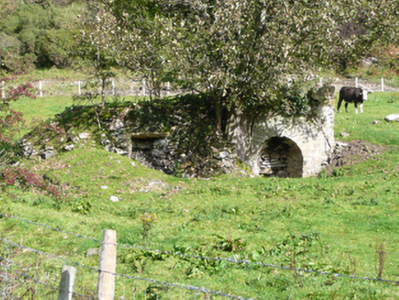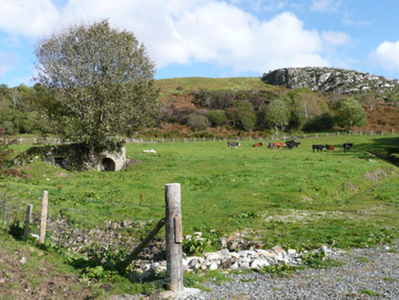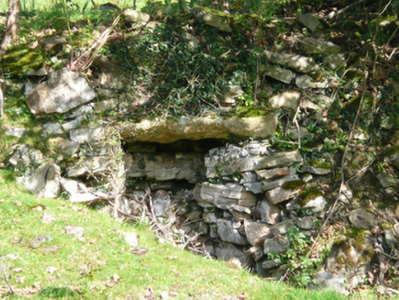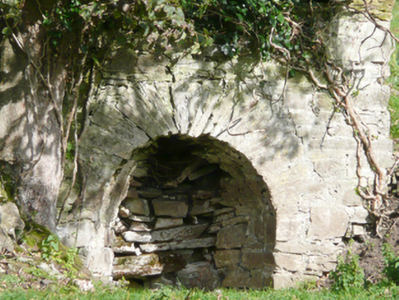Survey Data
Reg No
40901735
Rating
Regional
Categories of Special Interest
Social, Technical
Original Use
Kiln
Date
1780 - 1820
Coordinates
220612, 440329
Date Recorded
07/10/2010
Date Updated
--/--/--
Description
Freestanding two-bay lime kiln on rectangular-plan, erected c. 1800, having square-headed aperture to the west and round-headed aperture to the east. Set into natural slope in field. Now out of use with trees growing from site. Constructed of roughly coursed rubble stone masonry and rubble stone masonry. Roughly squared stone lintel over square-headed kiln, roughly dressed rubble stone voussoirs to round-headed aperture. Former loading bays to summit, now partially collapsed. Earthen embankment to rear, formerly giving access to loading chambers. Set back from road in rural location to the north-east of site of Springfield House (built c. 1688 and demolished in 1968) and to the south-west end of the Fanad Peninsula.
Appraisal
This interesting pair of conjoined former lime kilns survive in relatively good condition, despite being out of use for a considerable period of time, and retains much of their early character and form. They were probably originally erected during the last decades of the eighteenth century of the first decades of the nineteenth century (depicted on Ordnance Survey first edition six-inch map of 1836. These particular lime kilns were probably originally associated with Springfield House (originally associated with the Patton family, and subsequently leased to the Dill family after the Pattons emigrated to the USA), originally built c. 1688 and demolished in 1968, which was located a short distance to the south-west of site. It is well-built using local rubble stone masonry and is an appealing and unassuming element of the agricultural\industrial and social heritage of County Donegal. The embankment to the rear was built\modified to allow for the easy loading of stone through openings in the roof structure, while the aperture to the front was used to fire the oven to burn the stone and produce lime. The form of these lime kilns suggest that the kiln to the west with the square-headed aperture was probably added to the existing round-headed kiln to the east. Lime kilns appear to have come into popular use in Ireland during the eighteenth century and were a very common feature in the rural landscape up until the first decades of the twentieth century. They were used to burn limestone to produce lime, which was used as an agricultural fertilizer and spread on agricultural land, or in construction as a mortar and a render. Lime was also used for lime-washing buildings, particularly farm buildings, as it was regarded as a cleansing agent at the time. Small rural lime kilns started to go out of common usage during the late nineteenth-century with the advent of industrial-scale lime production facilities and improvements in the transport network, particularly the development of the railways. These simple features are an interesting feature in the picturesque landscape to the south-west end of the Fanad Peninsula, and are an integral element of the built heritage of the local area.







